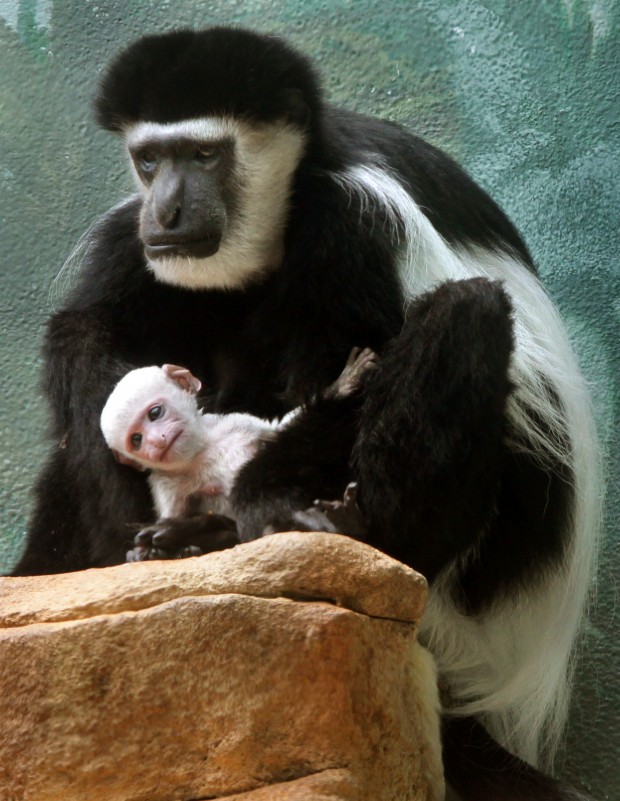
The species is critically endangered, with fewer than 1200 animals living in the southwestern parts of the Gran Caldera Scientific Reserve. Pennant’s red colobus monkey, Piliocolobus pennantii, lives in lowland, mid-montane tropical moist forests and marsh forests on the Equatorial Guinea island of Bioko. Oustalet’s red colobus monkeys, Piliocolobus oustaleti, live in forests in South Sudan, southern Central African Republic, and the Democratic Republic of Congo. The species is critically endangered due to hunting and habitat loss. Niger Delta red colobus monkeys, Piliocolobus epieni, are endemic to the marsh forests in the western part of the Niger Delta. It has come close to being the first primate declared extinct, with no sightings of the monkeys since 1978.Įvidence suggests a small number of Miss Waldron’s red colobus live in the southeast corner of Côte d’Ivoire. Miss Waldron’s red colobus was first discovered in 1933 by a British museum collector. In 2016, the species was unexpectedly found near the village of Lokobekobe. Field surveys conducted in 2007 in the area of its historic range failed to reveal any evidence of the animal.

The Lomami red colobus monkey, Piliocolobus parmentieri, is endemic to the Democratic Republic of Congo. This species suffers from significant hunting pressure and habitat loss. Lang’s red colobus monkey, Piliocolobus langi, lives in lowland rainforests in the northeastern portion of the Democratic Republic of Congo. Foa’s red colobusįoa’s red colobus monkey, Piliocolobus foai, occurs primarily in montane and submontane forest in the Itombwe Nature Reserve and the Kabobo Massif in the Democratic Republic of Congo. It appears as endangered on the International Union for Conservation of Nature’s Red List of Threatened Species. Rediscovered in 2015, the species previously went without a confirmed sighting for forty years. Bouvier’s red colobusīouvier’s red colobus monkey lives in swampy forests surrounding the Congo River. Listed as endangered, they face threat from habitat degradation, habitat loss, and predation from chimpanzees. Ashy red colobusĪshy red colobus monkeys, Piliocolobus tephrosceles, occur primarily in the Kibale National Park in Western Uganda. There are 16 distinct forms of the red colobus monkey that make up the diverse Piliocolobus species. The Zanzibar red colobus monkeys feed on mangrove leaves and subsist on a drier, coarser diet than any other red colobus monkey. It endures long digestive periods to extract the most nutrients from its food. They also eat charcoal to combat the toxins naturally found in some leaves.Įating a varied diet, the red colobus’s stomach is larger than those of similar-sized monkeys. The red colobus monkey’s diet primarily consists of young leaves, flowers, and unripe fruit.
#Chimpanzee baby red colobus monkey full
Infants have black and white coats, with the full colouration only appearing between 6 and 11 months old. Females tend to have shorter canines, thinner tails, and slightly smaller skulls. Adults grow to a body length of 45-65 cm and weigh between 5.2 and 11.3 kg. The monkey’s tail is between 58-77 cm long and is dark brown at its root. The fur on the underside of the body is lighter than the fur on its back. It has pink lips, nose, and eye rings with a black band of hair extending from above the eyes to the temples.
#Chimpanzee baby red colobus monkey Patch
It typically has brownish-red fur on the body, with a patch of black to chocolate brown fur on the head. The Red Colobus Monkey’s AppearanceĮach species of red colobus monkey differs in appearance. It also has long fingers and a small bump instead of thumbs. Primarily found in forests, the species has evolved to leap between trees. They are closely related to the black-and-white colobus monkeys and are often found in groups alongside the blue monkey. The Piliocolobus species falls into the latter category. Monkeys are either classified as new world or old world.

The primates’ beautiful fur and lack of fear towards humans makes them the unfortunate target of hunters.ĭiscover more about the appearance, diet, and population of the red colobus monkey below. They are the most threatened group of non-ape primates in Africa and face a variety of dangers. Africa is home to the red colobus monkey, a remarkably diverse group of primates.


 0 kommentar(er)
0 kommentar(er)
